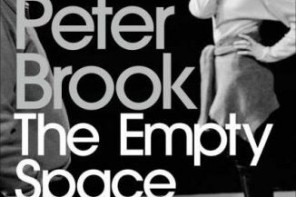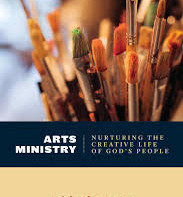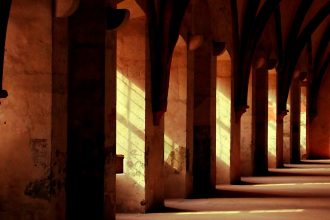I’m passionate about a few things. For instance, the billowing thunderstorms that roll over the prairie I grew up on. I can talk about architecture all day long. Topping the list is how the Church interacts — or doesn’t, as the unfortunate case may be — with the arts, particularly the plastic arts. Plastic arts are generally defined as arts that involve physical manipulation of a medium by moulding or modeling, such as sculpture, ceramics or painting.
Despite doing it for a living, I’m not passionate about graphic design. For me it’s simply a creative vocation that pays the bills. I’d rather be in my studio modeling clay, carving wood or building furniture. However, even though I’m not passionate about it, I understand the need for good graphic design.
The Christian community seems to choose one of two approaches when it comes to appearances. They either don’t give it much attention at all, or they give it too much consideration.
The problem with not giving print publications appropriate attention is somewhat self-explanatory. Like it or not, an organization will be judged on appearances, and, really, that’s okay. Giving design its due does not mean we are acquiescing to shallow human standards. In fact, there is Biblical precedent for doing things well and even for embellishing in our design, most notably in the plans for the tabernacle found in the book of Exodus.
The first thing a person sees when they approach a ministry or a church will probably be the signage, building itself, website or a printed pamphlet. Hans Rookmakker rightly pointed out, in his booklet Art Needs No Justification, that these visual elements
are often the outsider’s first encounter with Christians. In a way they constitute our outward face and appearance. Just as people show who they are by their clothes and the way they move, so these things (music, posters—in one word, art) are the things that form our first and sometimes decisive communication. [1]
Media and design say something about a congregation, specifically about the reason and goals for the gathering. By extension, they also say something about God, about what a church thinks of God. Like a lot artistic endeavors, exactly what design says isn’t quantifiable in tidy terms, but that it does speak is undeniable.
Conversely, there is also a problem in giving too much attention to design. Architect Michael McDonough created a fantastic list for designers called The Top 10 Things They Never Taught Me in Design School. Number four on the list is “Don’t overthink a problem.” I’ve seen some pretty crazy stage lighting in churches on Sunday mornings. I’ve seen print publications with so much flourish that any content a reader can hunt down becomes irrelevant. Perhaps the best examples of trying too hard in the church, however, are the background slides for praise and worship songs, beamed onto screens with now ubiquitous projectors.
The point of putting the words of a song on a screen is so the congregation can read them. When we put complex images — some of them animated no less — behind the lyrics, it makes them much more difficult to read. My suggestion? Leave well enough alone and keep the background a static, solid color in contrast with the color of the text and be intentional with your interior design.
An acquaintance once wrote on his blog that he aspired simply to be a good designer, not a great designer. He went on to explain that too much design sets out to be great, to win awards or gain notoriety via popular publications. Good graphic design, in contrast, sets out to communicate clearly. It is, after all, often referred to as “visual communication.”
The trick here — like in so much of life — is to find a balance and be intentional. This approach requires that money be in the budget to hire a designer every few years (if one is not on staff). With that money, it’s important to choose a designer that has a good understanding of what is needed. A church intentional about good design needs to be prepared to interact intelligently with the designer during the design process, being open to new ideas the designer might propose. Likewise, designers need to be aware of how a church or nonprofit functions in comparison to many other clients. Slowly, that is. For example, approval of a budget for the project can take a few months, and there are often multiple parties involved in decision-making.
What is the end goal of print design? Make sure you look good for God.
Paul Nielsen has served as Communications Manager with the small mission mobilizer Mission Data International since 2004. He and his wife hope to, someday in the next five or ten years, establish or work with an arts colony-slash-retreat with the intent of mobilizing visual artists for missions. Paul works on his own sculpture as often as he can, which isn’t nearly often enough.
[1] Hans Rookmaaker, Art Needs No Justification (Downers Grove: Inter-Varsity Press, 1978), 19.




